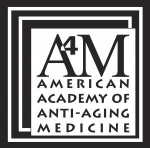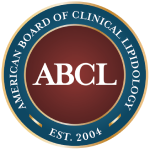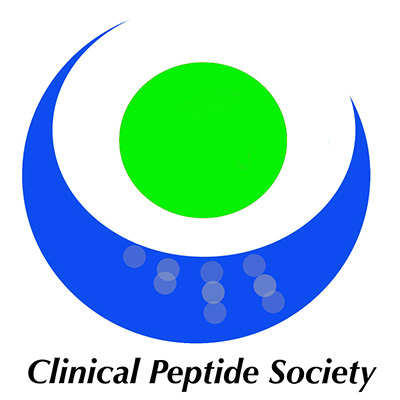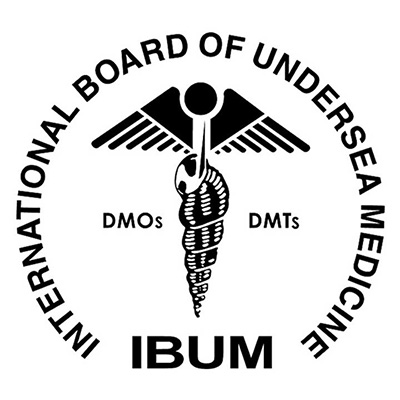Can Red Light Therapy Cause Cancer? What to Know
Authored by: Dr. Juan Chavez, MD and Dr. Lucia Mireles-Chavez, MD
Can red light therapy cause cancer? According to current scientific evidence, red light therapy does not cause cancer and is considered safe for most people when used as directed. Unlike ultraviolet (UV) light, which is known to damage DNA and increase cancer risk, red light therapy uses low-level wavelengths that don’t carry the same dangers.
Research shows that red light therapy can actually help reduce inflammation, speed up healing, and improve skin health without triggering harmful cell changes. Leading dermatologists and medical experts confirm there’s no link between red light therapy and cancer, even with repeated treatments over months or years. This confidence comes from extensive clinical studies and safety reviews.
Key Takeaways of Can Red Light Therapy Cause Cancer
- Red light therapy does not cause cancer and is considered safe when used as directed in medical settings, according to current scientific evidence.
- Unlike ultraviolet (UV) light, red light therapy uses non-ionizing wavelengths that do not damage DNA or increase cancer risk.
- Clinical studies and peer-reviewed research confirm that red light therapy can improve skin health, reduce inflammation, and speed up healing, with no link to cancer development or tumor growth.
- Potential side effects are rare, mild, and temporary, such as slight skin redness or a sensation of warmth, especially under medical supervision.
- Patients with a history of skin cancer, photosensitivity, or certain medical conditions should consult with healthcare professionals before starting red light therapy.
What Is Red Light Therapy?
Red light therapy uses specific wavelengths of visible red and near-infrared light to trigger biological effects in cells. Clinics and medical offices use this therapy to support skin health, wound healing, and other targeted benefits.
Red Light Therapy Science and Mechanism
Red light therapy science focuses on how red and near-infrared light interact with mitochondria in human cells. These wavelengths activate cellular respiration and promote increased energy production called adenosine triphosphate (ATP). Light-emitting diodes (LEDs) in medical environments deliver focused beams, aiming to reach tissue depths of up to several millimeters.
Scientific studies cited in journals like Photomedicine and Laser Surgery highlight how this process enhances cellular function. Results include boosted tissue repair, reduced inflammation, and improved circulation in treated areas. Clinical settings use calibrated devices for controlled exposure, minimizing risks and ensuring consistent outcomes.
Clinical Benefits of Red Light Therapy and Safety
Red light therapy benefits include improved healing rates, reduced inflammation, and enhanced skin appearance. Medical offices apply the treatment after surgeries, injuries, or for ongoing dermatological care. Physicians point to observed improvements in conditions like psoriasis, chronic wounds, and joint pain, detailed in peer-reviewed articles.
Safety of red light therapy remains a primary focus in clinical practice. Only trained healthcare providers administer sessions, controlling duration and intensity to match patient needs. The absence of ionizing radiation in red and near-infrared wavelengths supports a strong reputation for safety among experts, with no DNA damage or cancer risk documented in credible clinical studies.
Professional Application in Medical Offices
Scheduling red light therapy sessions with licensed professionals ensures customized protocols for each patient. Medical providers assess individual conditions and supervise every session, following established guidelines. Clinics often integrate red light therapy with other medical treatments to optimize patient outcomes.
Supervised treatments promote safety, including wear protective goggles when using red light devices to target facial or scalp areas. Patients access therapy within regulated environments, providing precise dosage and documentation for every appointment. This supervised care distinguishes clinical red light therapy from other light-based interventions.
How Red Light Therapy Works
Red light therapy in a medical setting uses clinically precise wavelengths of red and near-infrared light to initiate specific biological processes. Clinical providers administer red light therapy following established protocols to improve tissue repair, reduce inflammation, and boost cellular health without causing DNA damage.
Cellular Effects of Red Light Therapy in Medical Practices
Red light therapy targets cells with red and near-infrared photons, primarily affecting mitochondria. Cells absorb these wavelengths, which prompt mitochondria to produce more ATP (adenosine triphosphate). ATP fuels numerous essential cellular functions, including metabolic activity and tissue regeneration in clinical treatments.
Medical providers rely on these outcomes to support healing and rehabilitation. Increased ATP levels from red light therapy enhance collagen and elastin synthesis. This process benefits human skin health, assists post-surgical recovery, and expedites wound healing in clinical settings.
Red Light Therapy and Tissue Healing in Doctor-Supervised Environments
Clinics utilize red light therapy for post-injury and post-procedure support. Therapy application increases blood flow and nutrient delivery to treated tissues. These effects reduce inflammation and promote faster resolution of edema, bruising, and surgical wounds.
Dermatologists and rehabilitation specialists administer red light therapy as an adjunct to established care plans. This controlled environment ensures exposure precision, reducing risks while maximizing therapeutic benefits. Patients experience improved functional recovery, better circulation, and enhanced cosmetic results under direct medical supervision.
Can Red Light Therapy Cause Cancer?
Red light therapy poses no known cancer risk when managed in a clinical setting by healthcare providers. Medical experts and peer-reviewed research consistently report red light therapy as safe for use on human tissue.
Examining the Evidence
Scientific studies show red light therapy does not cause cancer or stimulate tumor growth. A 2012 preclinical study involving mice with UV-induced skin cancer found no increase in tumor size with red light exposure. Researchers even observed a small reduction in tumors during early treatment periods.
Peer-reviewed analysis confirms red light therapy uses non-ionizing wavelengths, so it cannot damage DNA. These wavelengths, ranging from 600 nm to 700 nm, lack the energy necessary to initiate the DNA mutations seen with cancer formation. Clinical guidelines require physician oversight, precise dosing, and safety protocols, adding further protections for patients in a medical office.
Comparing Red Light to Ultraviolet Light
Red light therapy differs significantly from ultraviolet (UV) light in cancer risk. UV light penetrates skin deeply and has the ability to alter DNA, which is a primary cause of skin cancer. UV wavelengths range from 100 nm to 400 nm and possess high energy levels that disrupt cellular genes.
Red light therapy, in contrast, employs longer, less energetic wavelengths that do not penetrate skin as deeply or cause DNA damage. Medical consensus highlights this distinction as critical, since cancer risk is linked to light’s energy intensity and its interaction with DNA. Dermatologists schedule red light therapy treatments in controlled clinical environments to maximize safety and health outcomes.
Potential Risks and Side Effects
Low level light therapy administered in clinical settings remains a low-risk medical treatment, with well-documented safety data from numerous controlled studies.
Potential Red Light Therapy Risks in Medical Office Appointments
Clinical risks from red light therapy are rare and mild when delivered by trained professionals. Sessions usually involve brief exposure to red or near-infrared light, with medical oversight throughout the appointment.
Temporary skin redness or sensations of warmth occur in some patients. Providers monitor for these effects and adjust the therapy schedule or wavelength as needed. Data show no evidence of burns or permanent skin damage during office treatments.
Patients with a history of photosensitivity or recent cancer diagnosis receive additional screening before appointments. Oncology teams sometimes collaborate with clinicians if patients combine therapies. Contraindications include areas with active severe infection or lesions not evaluated by a provider.
Documented Red Light Therapy Side Effects from Clinical Use
Reported side effects in medical office settings are transient and manageable. Most patients show no symptoms after red light therapy appointments.
Skin redness subsides within hours post-session and rarely recurs in future treatments. Discomfort, if present, is short-term. Eye safety protocols, such as protective goggles, are always included in reputable clinics to prevent accidental retinal exposure.
Clinics maintain strict safety protocols, minimizing risks and addressing side effects promptly during scheduled red light therapy appointments.
Frequently Asked Questions About Can Red Light Therapy Cause Cancer? What to Know
Does red light therapy cause cancer?
No, low level laser therapy does not cause cancer. Current scientific evidence shows that red and near-infrared wavelengths used in this therapy are non-ionizing and do not damage DNA, unlike UV light, which can increase cancer risk.
How does red light Treatment work?
Red light therapy uses specific visible light and near-infrared wavelengths to stimulate mitochondria in cells. This increases ATP production, which helps improve cell function, speeds up tissue repair, helps hair growth (helps for hair loss), reduces inflammation, and enhances circulation.
Is red light therapy safe?
Yes, when administered by trained healthcare providers in clinical settings, red light therapy is considered safe. Numerous studies confirm its safety and low risk of adverse effects, especially when proper protocols are followed.
What conditions can red light therapy help treat?
Red light therapy can help with various conditions, including the reverse skin aging signs, skin disorders like psoriasis, joint pain, wound healing, even weight loss, and post-procedure recovery. It is also used to reduce inflammation and support tissue repair.
Is red light therapy the same as UV therapy?
No, red light therapy uses longer, less energetic wavelengths than UV light and does not penetrate deeply or alter DNA. UV light can damage DNA and increase the risk of skin cancer, but red light therapy does not.
Who should avoid red light therapy?
People with a history of skin cancer, those taking photosensitizing medications, individuals with specific photosensitivity conditions, and pregnant women should consult a healthcare provider before starting red light therapy.
Can red light therapy be used for cancer patients?
Emerging evidence suggests that red light therapy may help manage pain and reduce inflammation for cancer patients, but it does not treat or promote cancer. Always consult a medical provider before starting any therapy.
Conclusion and Summary of Can Red Light Therapy Cause Cancer? What to Know
Red light therapy continues to gain traction in clinics thanks to its strong safety profile and proven benefits for skin health and recovery. With rigorous clinical oversight and adherence to medical guidelines patients can feel confident in the therapy’s safety when administered by trained professionals.
As research advances and regulations remain strict red light therapy stands out as a reliable option for those seeking non-invasive solutions. Anyone considering this treatment should consult with a qualified healthcare provider to ensure it’s appropriate for their individual needs.
Ready to Experience the Revolutionary Power of Elysium Red Light Therapy in Las Vegas?
Feel Better. Look Younger. Heal Faster.
Unlike ordinary red light beds that simply shine basic lights on your body, our ARRC LED Elysium system is a game-changer. It's like having a personal health computer that actually scans your body. Then it delivers a customized blend of healing wavelengths that work together to optimize every cell from head to toe.
This isn't your typical spa treatment. Our FDA-cleared technology uses six different wavelengths to supercharge your mitochondria, the powerhouse of every cell in your body.
Experience Red Light Benefits You Can Actually FEEL:
- Pain relief for joints, back & chronic inflammation.
- Improved skin tone, collagen boost & fewer fine lines.
- Faster muscle recovery & reduced soreness after workouts.
- Support for fat metabolism & cellulite reduction.
- Enhanced daily energy.
- Better sleep quality.
- And much more!
Why settle for ordinary when you can have extraordinary? World Champion Athletes, Pro Sports Teams, and the US Military trust this breakthrough technology. Many patients say they refuse to go back to regular red light beds once they've experienced the Elysium difference.
At Las Vegas Medical Institute, we combine cutting-edge red light technology with deep medical expertise for results that speak for themselves.
Schedule Your Red Light Therapy Consultation here, or call us today at (702) 577-3174 to discover why this revolutionary therapy is transforming lives across Las Vegas!
Cover Image Credit: Merls / 123RF.com (Licensed). Photo Illustration by: By Las Vegas Medical Institute.













